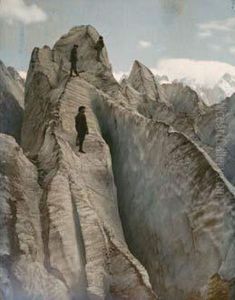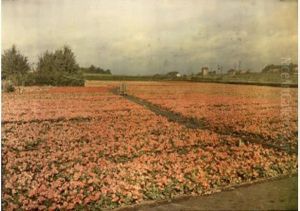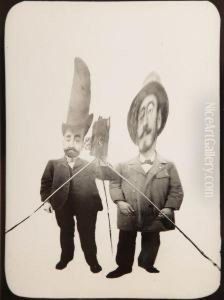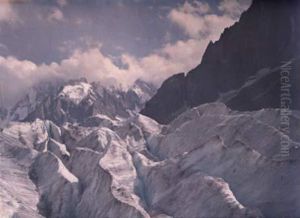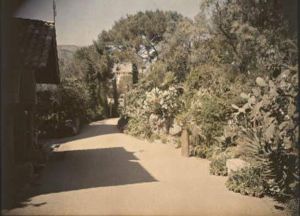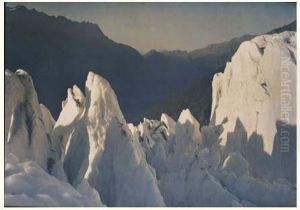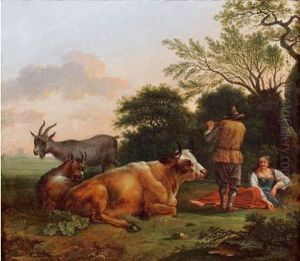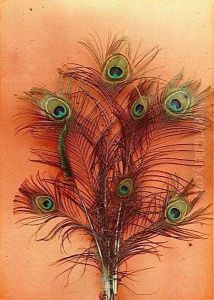Leon Gimpel Paintings
Leon Gimpel was a pioneering French photographer, born on August 13, 1873, in Paris, France. Notably recognized for his early use of color photography, Gimpel made significant contributions to the field of photography through his innovative techniques and his keen eye for capturing the essence of early 20th-century life. His work spans various subjects, including street scenes, children's portraits, and scientific phenomena, all marked by his distinctive use of color and composition.
Gimpel's interest in photography began at a young age, and by the turn of the century, he was already making a name for himself. He was among the first to experiment with the autochrome process, introduced by the Lumière brothers in 1907. This process allowed for the production of color photographs, a revolutionary development at the time. Gimpel embraced this new technique with enthusiasm, capturing vibrant scenes of Paris and its inhabitants. His photographs from this period provide a rare and valuable colorful glimpse into Parisian life in the early 20th century.
Beyond his work in street photography, Gimpel also had a fascination with science and technology. He frequently photographed scientific experiments and was particularly interested in the advancements in aviation. His photographs of airships and airplanes are among the earliest examples of aviation photography, capturing the excitement and innovation of the era.
Throughout his career, Leon Gimpel was recognized for his contributions to photography. He was a regular contributor to several magazines, where his photographs were used to illustrate stories and articles. Despite the significant impact of his work, Gimpel's contributions were somewhat overshadowed by the tumultuous events of the 20th century, including two World Wars. He continued to photograph until his death on February 29, 1948, leaving behind a legacy that offers a colorful and dynamic view of the early 20th century through the lens of a truly innovative photographer. His work is preserved in various collections and museums, serving as a testament to his pioneering role in the field of color photography.
